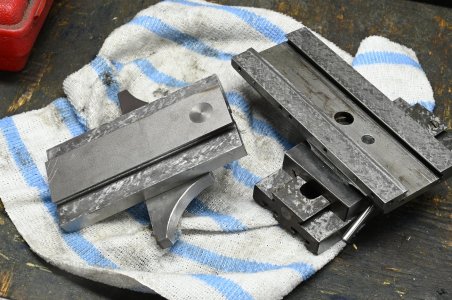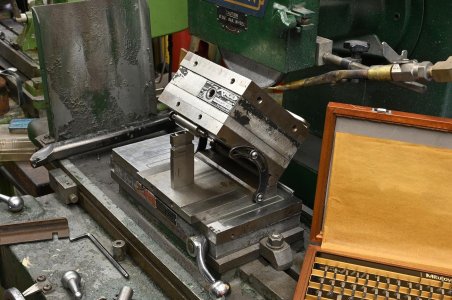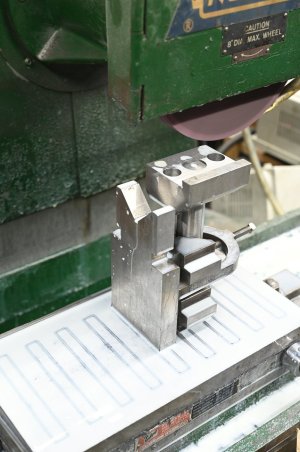Sure, to grind the angle on the dovetail, the horizontal surfaces are first scraped. A few photos showing the process
First scrape. (the work in these pics is not the same piece, just included to illustrate the process)

then reference off the scrape surfaces to grind the opposite parallel
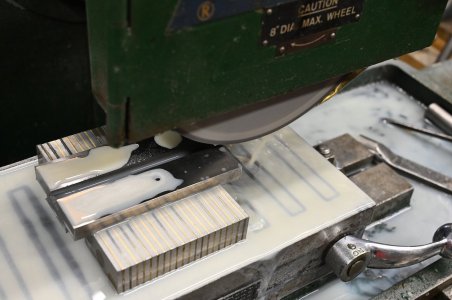
then with the ground surface (perfectly parallel to the scraped surface) mounting, grind the dovetail with the side of the wheel.

Yeah, I know, never grind on the side of the wheel, I'd tell the high school class the same thing

. If you are careful, it is fine, tool makers do it all the time. The key is to put some relief on the side so there is maybe a 1/4-1/2 ring that is doing the grinding. Stops it from burning. That and a full spark out. Without touch ting size chuck it gets all the angle perfectly the same. Usually you have to scrape these, but this slide rest was small enough I could fit it on the grinder ..... and those tiny surfaces would be miserable to scrape.
A diagram I did showing the general idea of the relief before grinding on the side of the wheel (not for this project obviously, the wheel isn't dressed at an angle).
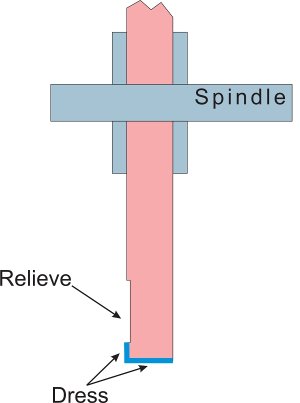
The result a fit as good or better than factory new.
